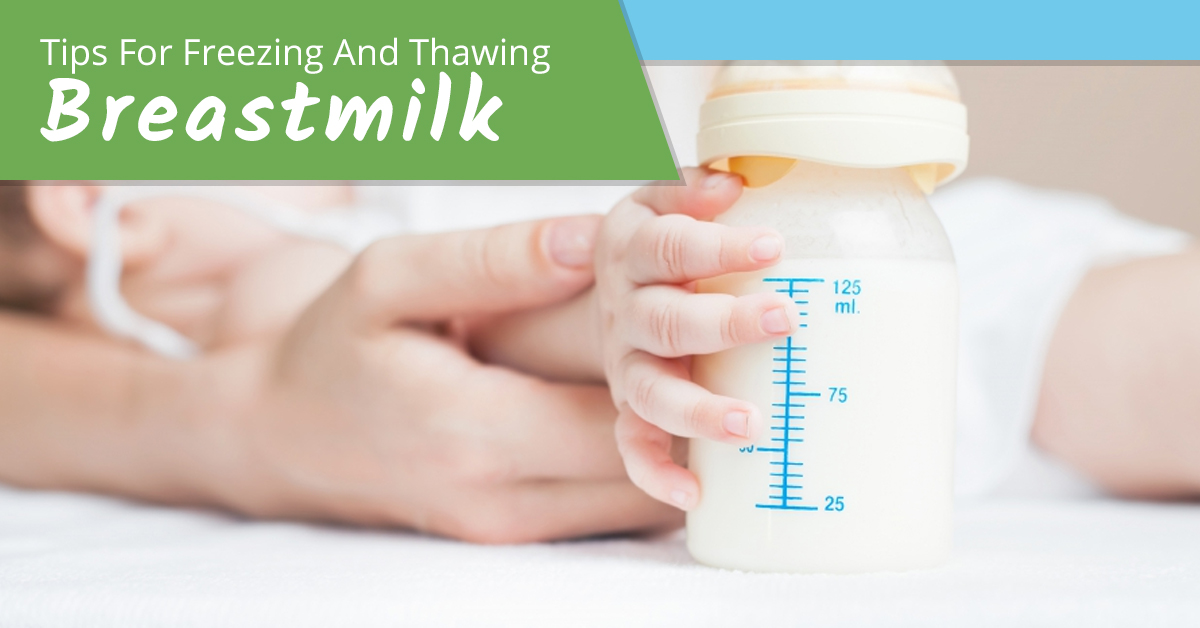

Call us: 845-783-6678
 Cart 0
Cart 0 No products

Many mothers at one point or another will find themselves pumping breast milk and storing it for later use. Unlike milk you buy at the store, breast milk doesn’t come with an expiration date. Thankfully, there are a few general rules of thumb when it comes to how to best pump and store your milk, as well as what to do with it after you store it.
In today’s blog, we’ll be going over everything you need to know about pumping, storing, freezing, and thawing your milk. Keep in mind, a high-quality electric breast pump makes this all a lot easier. Amedsupplies.com offers free breast pumps covered by insurance to qualifying moms all over the country, so be sure to get your free breast pump when your little one arrives!
Different sources will give you different information on how long you can safely store your breast milk. Today, we are offering the guidelines given by the Center For Disease Control. These guidelines apply to healthy full-term babies. Premature babies or babies who are sick may need special accommodations which you should speak with your pediatrician about.
Freshly Pumped Milk
Room temperature (countertop) for up to 4 hours
Refrigerator for up to 4 days
Freezer for up to 6 months
Thawed, Previously Frozen Milk
Room temperature for 1-2 hours
Refrigerator for up to 1 day
Do not refreeze thawed breast milk
The best way to store breast milk is in milk bags that are specifically designed for breast milk storage. However, you can also use clean, air-tight, food-grade containers that are made of BPA-free plastic or glass. Do not store milk in bottles or containers labeled with the recycle symbol code 3 or 7, meaning it may contain BPA (bisphenol-A, a chemical added to many plastics). Label the bags or containers using a Sharpie or dry-erase marker with the date it was pumped.
There are multiple ways to thaw frozen breast milk, which will depend on how much time you have. You can thaw milk in the refrigerator overnight and use it within 24 hours. You can also place the frozen milk in a tub of lukewarm water. You never want to use hot water to thaw milk. Additionally, do not thaw milk in the microwave. Microwaves can kill important nutrients in breast milk as well as create hotspots that do not go away, even if you stir or shake the milk.
Breast milk that is kept cool in the fridge can be used for 24 hours after it is completely thawed (not from the time you take it out of the freezer). However, if you warm the milk under water or with a bottle warmer, or once it has reached room temperature, use that milk within two hours and do not refreeze.
Here’s where things get interesting. Some mothers report that their thawed or refrigerated breastmilk smells of soap. That’s right, you just thawed your hard-pumped breast milk only to discover it smells more like Dawn than milk! This is actually completely normal. Milk contains an enzyme called lipase, which will break down fat in the milk. As the fat breaks down, cooled or frozen milk can develop a soapy smell and taste.
Thankfully, this is completely safe for the baby to drink. If your milk has gone bad, it will smell like spoiled milk, not like soap. However, just because it’s safe, doesn’t mean your baby will drink it if they are a picky eater. You can avoid this by scalding your milk before storing it. Put it in a clean pan and heat it up just until bubbles start to form, then cool it quickly. This will kill off the enzyme while still maintaining the nutritional value of your milk.
So, you are going on vacation with a some pumped breastmilk or maybe Dad and Baby are having a bonding day at the beach while you relax at home. Never fear! Breast milk can be kept in an insulated bag or cooler with frozen ice packs for up to 24 hours.
Getting any liquid onto a plane these days is difficult, however, the TSA (Transportation Security Administration) does make accommodations for breast milk. These are subject to change, but as of the publishing of this blog, they are as follows:
Notify the TSA officer that you are bringing breast milk (or formula, juice, etc. for infants or toddlers) on the plane.
Remove these items from your carry-on to be screened by X-ray.
TSA officers may ask you to open containers or have you transfer a small amount of breastmilk to a separate container where they may test it for explosives or prohibited items.
You may inform the TSA officer if you do not want your breast milk opened, tested, or X-rayed. This may require more time and additional screening of you, your belongings, and your breast milk, so keep that in mind.
You do not need to have your infant with you to carry breast milk on the plane.
Ice packs, freezer packs, frozen gel packs, or other cooling accessories are allowed in your carry-on. However, if these items are slushy or only partially frozen at the time of screening, they may be subject to the same tests as your breast milk.
We know you are protective of your breast milk, and we encourage you to check the latest regulations before flying to ensure you know what your rights are and how you can best be cooperative with TSA agents to avoid any unnecessary stress.
We offer all of your basic breastfeeding supplies including milk bags and bottles at a great price. When it comes to getting your free breast pump, we’ll handle the insurance claim for you and send your pump and supplies right to your door. Get started today!